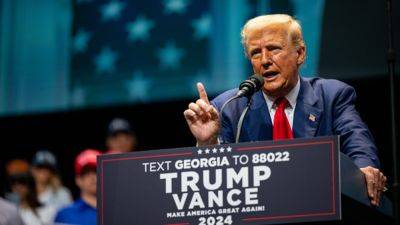The U.S. wants to triple nuclear power by 2050. America's coal communities could provide a pathway
The planned restart of Three Mile Island is a step forward for nuclear power, but the U.S. needs to deploy new plants to keep up with rising electricity demand, one of the nation's top nuclear officials said this week.
The U.S. needs to at least triple its nuclear fleet to keep pace with demand, slash carbon-dioxide emissions and ensure the nation's energy security, said Mike Goff, acting assistant secretary for the Office of Nuclear Energy at the Department of Energy.
The U.S. currently maintains the largest nuclear fleet in the world with 94 operational reactors totaling about 100 gigawatts of power. The fleet supplied more than 18% of the nation's electricity consumption in 2023.
The U.S. needs to add 200 gigawatts of nuclear, Goff told CNBC in an interview. This is roughly equivalent to building 200 new plants, based on the current average reactor size in the U.S. fleet of about a gigawatt.
"It's a huge undertaking," Goff said. The U.S. led a global coalition in December that formally pledged to meet this goal by 2050. Financial institutions including Goldman Sachs and Bank of America endorsed the target at a climate conference in New York City this week.
Constellation Energy's plan to restart Three Mile Island by 2028 is a step in the right direction, Goff said. The plant operated safely and efficiently, only shutting down in 2019 for economic reasons, he said.
The reactor that Constellation plans to re-open, Unit 1, is not the one the partially melted down in 1979.
Microsoft will purchase electricity from the plant to help power its data centers. Goff said the advent of large data centers that consume up to a gigawatt of electricity only reinforces the need for new reactors.
"A lot of the data centers are coming in and







